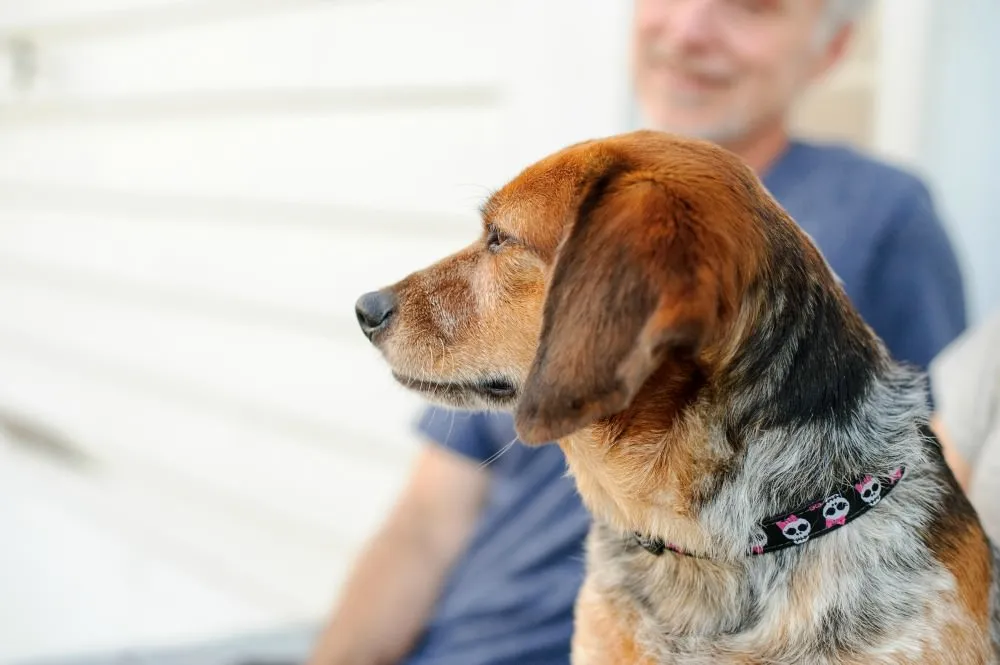Dealing with separation anxiety in dogs can be heartbreaking, especially for owners of breeds like Dachshunds who seem particularly prone to this issue. You might come home to find your furry friend has been excessively barking, destroying furniture, or even having accidents indoors—behaviors that often stem from intense fear rather than mischief. These signs aren’t just “bad behavior”; they’re cries for help when you’re out of sight. In fact, a survey of over 1,000 Dachshund owners by iHeartDogs.com revealed that 51% experienced moderate to severe separation anxiety in their pups, highlighting how common this phobia is.
As a dog training expert at Dog Care Story, I’ve seen countless cases where owners misinterpret these actions. Fortunately, separation anxiety in dogs is highly treatable with the right approach. Drawing from certified trainer Tracy Krulik, CTC, CSAT—founder of iSpeakDog and an honors graduate of the Academy for Dog Trainers—we’ll explore proven strategies like systematic desensitization. Tracy, who transformed her own Beagle Emma from a panicked pup to a confident solo companion, shares real-world insights backed by force-free methods recommended by veterinary behaviorists.
Recognizing the Signs of Separation Anxiety in Dogs
Spotting separation anxiety in dogs early is crucial for effective intervention. Common indicators include:
- Excessive barking or howling that echoes through the neighborhood.
- Chewing or scratching furniture, doors, or windows in a desperate attempt to reunite.
- House soiling, even shortly after being let out, which isn’t typical potty training regression.
- Pacing, drooling, panting, or other stress signals like lip-licking and yawning.
- Escape attempts that can lead to self-injury.
These behaviors typically ramp up within minutes of your departure and subside upon your return. Unlike boredom-driven destruction, anxiety-fueled actions target exit points like doors and crates. Video monitoring, as Tracy recommends, reveals subtle body language cues—furrowed brows, dilated pupils, or trembling—that confirm the diagnosis.
 Dachshund showing signs of separation anxiety, looking distressed near a door
Dachshund showing signs of separation anxiety, looking distressed near a door
For Dachshunds, with their loyal, velcro-dog tendencies, these symptoms hit hard. Owners often feel guilty, but understanding it’s a phobia akin to human fears of heights or spiders shifts the perspective toward compassionate training.
Common Mistakes That Worsen Separation Anxiety in Dogs
Many well-meaning owners unwittingly exacerbate separation anxiety in dogs by trying quick fixes that backfire. Tracy recounts her initial struggles with Emma: waiting for silence before re-entering reinforced panic rather than calm; stuffed Kongs went uneaten amid stress; relaxation exercises, pheromone diffusers, ThunderShirts, and massages provided no lasting relief.
In fact, these methods often fail because they don’t address the root phobia. Punishing the dog upon return heightens fear associations with departures, while over-comforting preempts independence. A year of trial-and-error left Emma more anxious, proving that force-free, phobia-specific protocols are essential.
The Proven Solution: Systematic Desensitization for Separation Anxiety
The gold standard for treating separation anxiety in dogs, endorsed by the American College of Veterinary Behaviorists, is systematic desensitization. This gradual exposure therapy mirrors human phobia treatment, building tolerance without overwhelming fear responses.
Tracy likens it to her own desensitization to spiders: starting with safe, low-stakes encounters (sweeping dead spiders) until handling live ones became routine. For dogs, it reprograms the departure cue from terror trigger to neutral event. Success stories abound—Emma went from panicking at 10 seconds alone to comfortably handling 4-5 hours.
Veterinary sources like the ASPCA confirm desensitization’s efficacy, with 70-90% improvement rates when paired with counter-conditioning (pairing absences with rewards).
 Emma the Beagle anxiously waiting for her owner, displaying stress signals like lip licking
Emma the Beagle anxiously waiting for her owner, displaying stress signals like lip licking
Step 1: Identify Your Dog’s Fear Threshold
Every dog has a unique “fear threshold”—the duration where calm turns to chaos. For Emma, it was 10 seconds; yours might be 2 minutes or 30. Use a webcam or phone app to observe:
- Pre-panic signs: lip licking, yawning, averted gaze.
- Escalation: whining, pacing, destruction.
Practice short trials daily (20-30 minutes total) staying below threshold. Tracy stresses mastering canine body language; resources like iSpeakDog.org offer free guides. Beginners should consult a CSAT-certified trainer to avoid errors that reset progress.
Step 2: Build Desensitization Exercises Gradually
Once the threshold is known, break departures into micro-steps, always returning before panic:
- Open door 1 inch, close, sit (30-90 seconds wait).
- Jingle keys, enter mudroom, return.
- Step outside 1 second, re-enter calmly—no fuss.
Counter-condition with high-value treats only during absences. Monitor via video: celebrate milestones like “5 minutes chill!” Gradually extend: 10, 17, 40 minutes, up to hours. Consistency is key—30 minutes daily yields results in weeks.
 Beagle lying calmly in a dog bed after desensitization training progress
Beagle lying calmly in a dog bed after desensitization training progress
Dachshund owners report faster gains due to their intelligence, but patience prevents regressions.
Progress at Your Dog’s Pace and Build Support
The secret? Never exceed tolerance. Early on, that meant mere seconds for Emma. Tracy and her husband relied on friends, pet sitters, or daycare (if social). Many owners already avoid solo time, turning training into mutual healing.
Avoid crate confinement if it triggers escape attempts—instead, use safe rooms. Track progress in a journal, adjusting for stressors like fireworks.
 Beagle relaxing confidently on the couch, fully over separation anxiety
Beagle relaxing confidently on the couch, fully over separation anxiety
When to Involve Medication and Your Veterinarian
For stubborn cases, vet-prescribed anti-anxiety meds or supplements accelerate desensitization. Tracy resisted initially but saw Emma surge ahead post-treatment, clearing panic fog for better learning. Meds alone rarely suffice but, per AKC guidelines, boost success by 50%.
Consult your vet for options like fluoxetine or CBD (vet-approved), ruling out medical issues first. Combine with training for holistic results.
Final Thoughts on Conquering Separation Anxiety in Dogs
Separation anxiety in dogs doesn’t have to rule your life—systematic desensitization, expert guidance, and vet support transform terrified pups into confident companions. From recognizing symptoms to gradual exposure, these steps empower owners like you. Dachshunds and beyond thrive with patience and science-backed methods.
Start today: Film a departure trial, note the threshold, and build from there. For personalized plans, reach out to certified trainers or explore Dog Care Story’s training resources. Your dog deserves a fear-free home— you’ve got this!
References
- Krulik, T. (2018). Insights from iSpeakDog.org and personal training experience.
- iHeartDogs.com survey on Dachshund separation anxiety (1,005 respondents).
- American College of Veterinary Behaviorists: Desensitization protocols.
- ASPCA: Separation Anxiety Guidelines.
- Academy for Dog Trainers: Force-free methodology.
